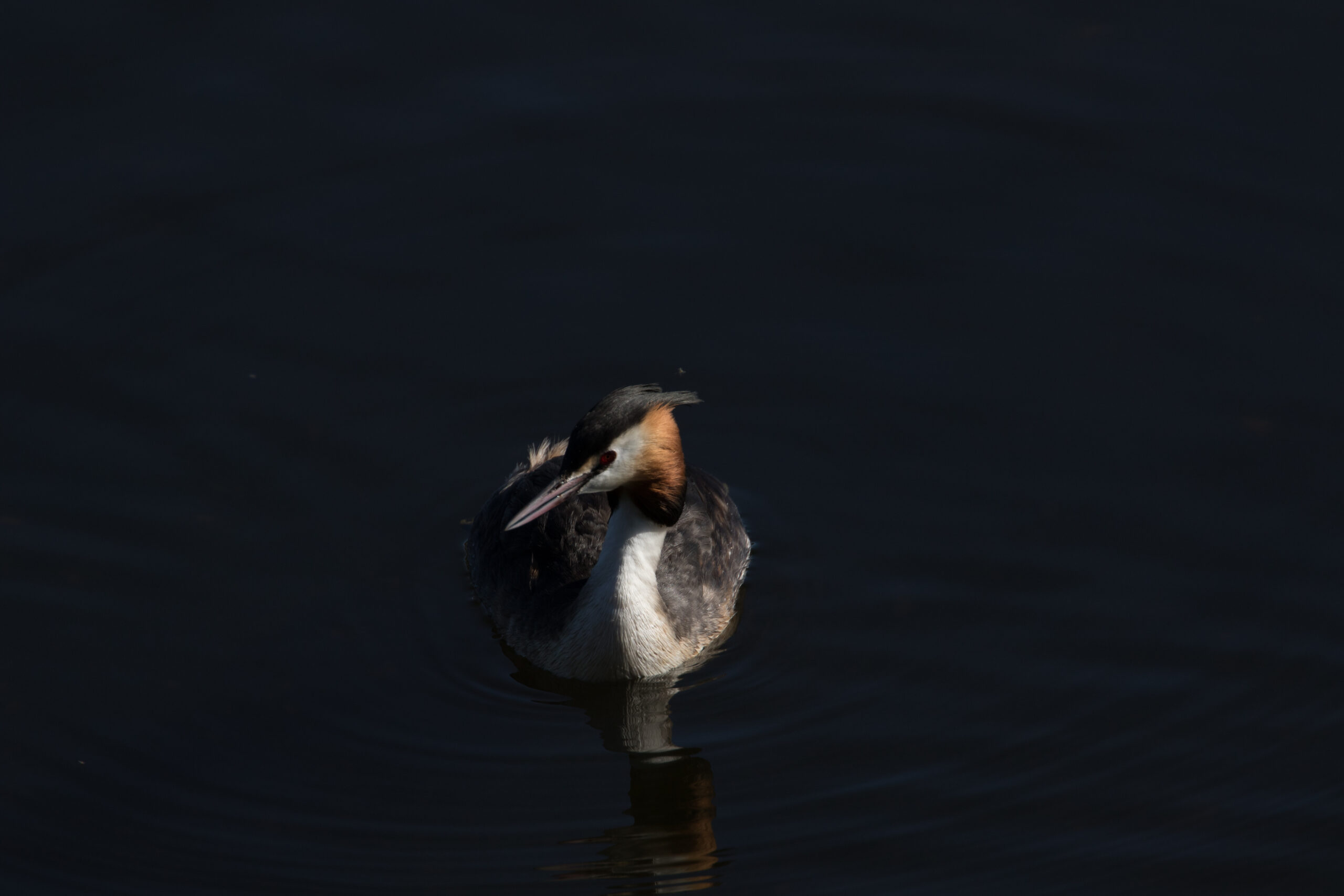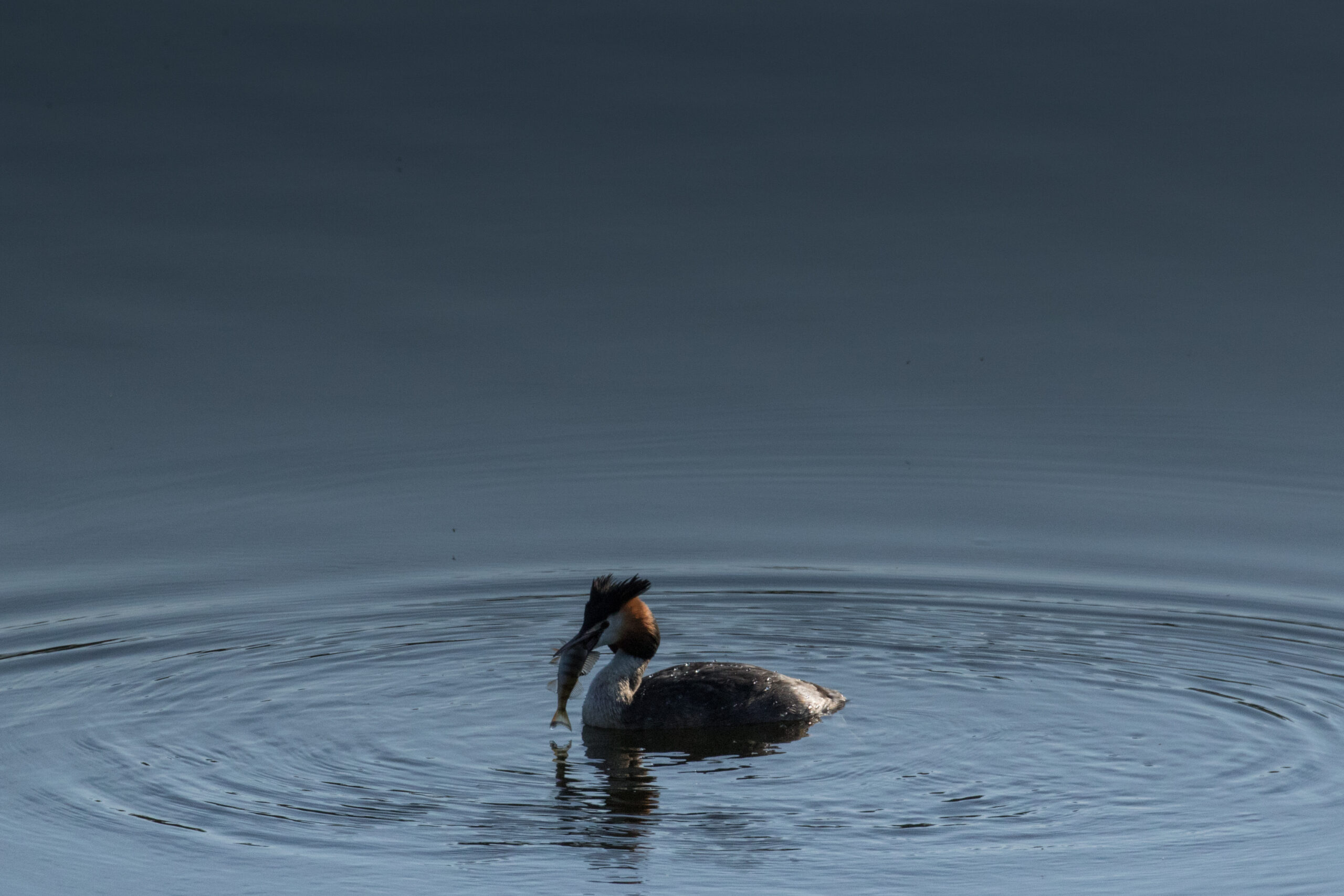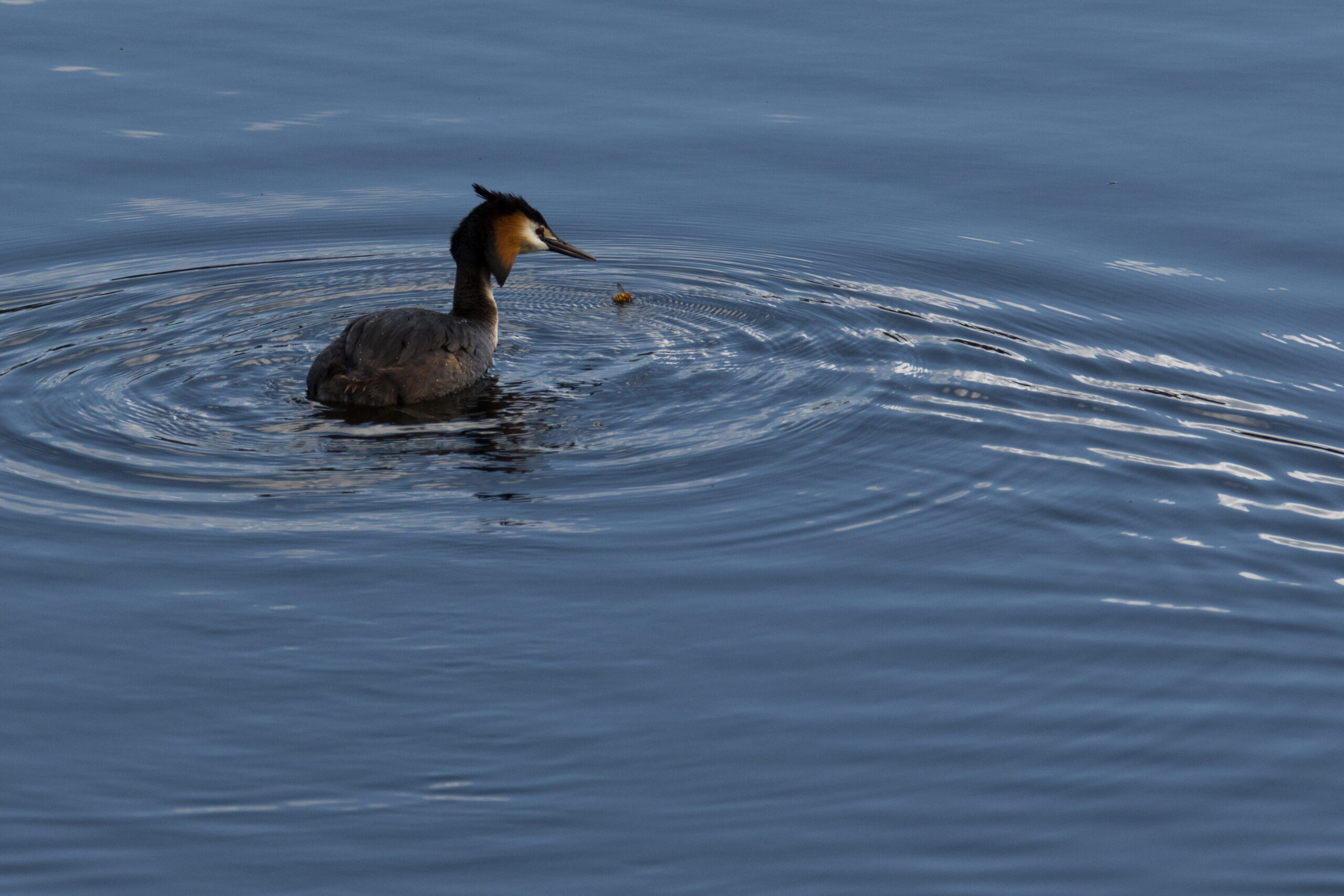Great Crested Grebes

Breeding plumage
With its striking appearance and fascinating behaviours, the Great Crested Grebe is in strong competition to be considered as one of the most interesting and beautiful of all European waterfowl. Here at Loch of the Lowes we are lucky to have at least 3 breeding pairs, with one pair choosing their territory right in front of the main hides, making observation of their intriguing daily lives easier than ever!
Currently the Great Crested Grebe are looking lovely in the display plumage. Their white faces are framed on each side with a dense ruff, or ‘tippet’ of chestnut and black feathers. Their crown crest is longer and darker than when in their basic plumage, worn briefly in autumn and early winter. Both the crest and the tippets are erectile and play an important role in their complex displays, of which both sexes partake in.
Both the male and female are alike in appearance and behaviour, however the females tend to be slightly smaller than the males, usually with shorted and thinner bills as well as exhibiting shorter crests and tippets. Determining these differences is much easier when they can be viewed together.

Population distribution
With a wide distribution throughout the old world, we are lucky enough to observe the Great Crested Grebe in temperate areas of Europe and Asia, as well as some parts of northern Africa. Within these ranges, they tend to breed on standing freshwater lakes (or lochs) and specialise in catching freshwater fish such as Roach, Perch, Chub, Tench and Bream. They will also eat invertebrate prey including aquatic insects.
This widespread occurrence of the Great Crested Grebe has however, not always been the case. In Britain this was largely due to trading of the white ‘grebe fur’ favoured in women’s fashion during the 18th and 19th century. By 1850 there were fewer than 32 pairs left in England! Fortunately, 19th century conservationists managed to protect the species and end the trading of ‘grebe fur’. Since then their numbers have risen considerably, with a corresponding increase in geographic spread, especially in Scotland. This is both through a more enlightened attitude towards bird conservation but also inadvertently through the provision of new habitats suitable for breeding; chiefly the flooding of old gravel pits for fishing.
Nesting and courtship
Locating a nest site is often started well before suitable vegetation has appeared, and courtship will continue until appropriate flora is available. The process of nest building is carried out by both sexes and involves the collection of aquatic vegetation and other materials and placing them on the chosen nest site, this is often over submerged plants, tree roots and the like.
The suitability of Lowes for breeding Great Crested Grebes is surely demonstrated by the 3 pairs we have nesting on our waters. There is a bountiful supply of nest building materials and many desirable locations on the loch for the Grebes to construct their nests for the season. Once a site is determined, the Grebe’s will defend their chosen areas fiercely, from both intruding grebes and individuals of other species, such as the Coot, who share similar niches for nest sites.
By this time of year at Lowes, pairs will have formed, completed their famous courtship weed dance and built nests. It is likely that the pairs are now sitting on eggs. Like the ospreys, both the male and the female will take turns in incubating on the nest. If they need to leave the nest for any length of time they will cover over the eggs with nesting material to camouflage them from predators. They will be incubating for 27-29 days and typically have up to 4 eggs.

Do you have any great crested grebes nesting near you? Does your local walk take you past a loch? If so please maintain a reasonable distance and keep your dogs on a lead. Perhaps you can chart their progress and let us know how many chicks hatch?
Johnny Rolt – Volunteer Species Protection Officer 2019 (Handa ranger 2020) spent his mornings in the hide at Lowes observing all the activity on the loch and in particular recording the behaviour of the Great Crested Grebe. The video, photos and blog were originally written last spring by Johnny, edited by the Lowes team.
Emma Castle-Smith
Visitor Centre Assistant Manager
Help protect Scotland’s wildlife
Our work to save Scotland’s wildlife is made possible thanks to the generosity of our members and supporters.
Join today from just £3 a month to help protect the species you love.
Preface
Breeding plumage With its striking appearance and fascinating behaviours, the Great Crested Grebe is in strong competition to be considered as one of the most interesting and beautiful of all …
